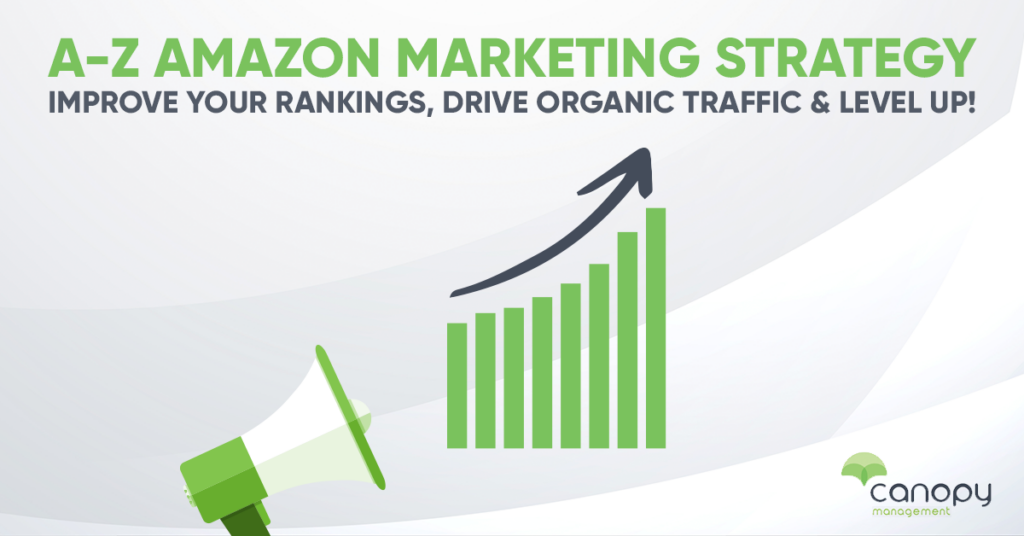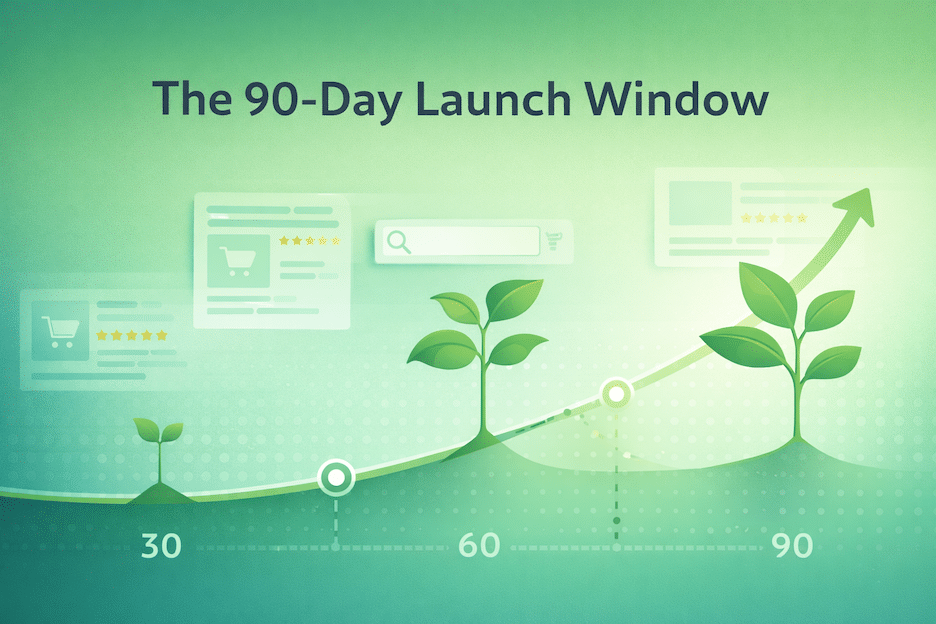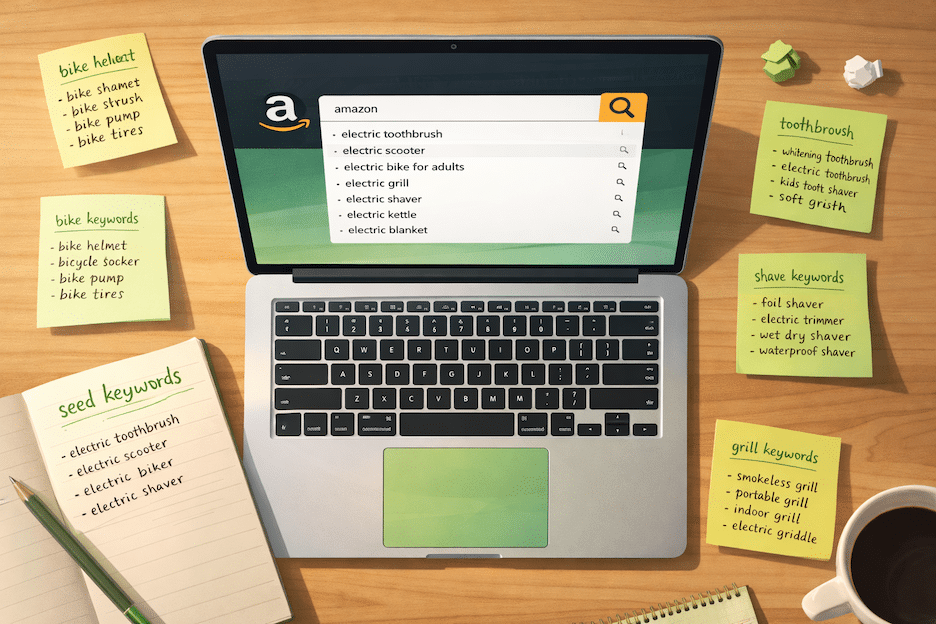The Entrepreneur’s Guide to Buying an Amazon Ecommerce Business
Don’t feel like starting a brand? Buy one instead! Here are the most important steps you’ll need to get started

In 2023, entrepreneurship can take many innovative shapes and forms. One that’s increased in popularity is starting, then scaling an online ecommerce business. Over the last five years, Amazon has solidified its position as the platform of choice.
But, there’s another entrepreneurial path forward that can eliminate a lot of the challenges involved in building your own Amazon business. I’m referring to the process of acquiring an existing Amazon brand.
This blog post looks at the steps an entrepreneur should take when embarking on this exciting journey. It also details software tools that can be used to make sure you’re buying a brand that has the potential to continue to scale, generate lasting income and add up to a successful exit.
But, first, what are the reasons that you would want to begin your ecommerce journey by acquiring an existing Amazon business?

Why Buy an Existing Amazon Business?
Sure, starting a business is exciting, and checks a lot of boxes for any entrepreneur. However, once you’ve scratched that itch once or twice, there are better ways to quickly get up to speed – and get the cash flow going – than starting from zero.
Bypass the Startup Phase Altogether
One of the top reasons to buy an existing Amazon business is that you can bypass the often risky and time-consuming startup phase. When you buy an established business, you’re acquiring a company that has already demonstrated its viability.
It has a track record of sales, an established customer base, and potentially a recognizable brand. Additionally, problems typically associated with startups, such as supply chain setup, inventory management, and listing optimization, have likely been addressed.
Cash Flow
Another significant advantage is that an established Amazon business will typically generate cash flow from day one. Unlike starting from scratch, where it can take a considerable amount of time to generate consistent revenue, a profitable Amazon business will already have revenues and, presumably, profits.
You’ll be able to benefit from the previous brand owner’s efforts to cultivate a customer base, source products, and optimize operations.
Accelerate Your Learning Curve
Purchasing an existing Amazon business can significantly accelerate your learning curve. It allows you to understand the business’s operations and market dynamics without starting from square one. You’re likely to gain access to a wealth of information from the previous owner, including supplier relationships, pricing strategies, customer service practices, and more.
This knowledge is invaluable and can provide a solid foundation for further growth and development.

How to Prepare to Purchase an Amazon Business
For many entrepreneurs, purchasing an existing Amazon business is the way to go. It’s a big part of the reason for the flurry of activity from Amazon “aggregators” in the last several years. Billion-dollar companies such as Thrasio and SellerX have been all over the news buying up Amazon brands. If it wasn’t a lucrative business model, this wouldn’t be the case.
Here’s how you can get started, albeit on a smaller scale.
1. Take the Time to Research the Ecommerce Landscape
The first step in purchasing an Amazon ecommerce business is to fully understand the ecommerce landscape. Amazon’s massive marketplace can be overwhelming. It’s a constantly growing ecosystem of product categories and competitive sellers. Take the time to familiarize yourself with the platform’s nuances and gain a firm grasp of how businesses operate within the marketplace.
Read blogs, listen to podcasts, attend webinars, and join online communities of Amazon sellers to immerse yourself in the lingo and logistics of Amazon ecommerce.

2. Be Clear About Your Business Goals
After getting a handle on the ecommerce landscape, define your business goals and preferences. Do you prefer a business in a particular niche? Are you interested in a business with private label products or would you rather have one involved in retail arbitrage? Your preferences will help narrow down the type of business that suits you best.
Consider your budget, time commitment, and desired level of involvement. These factors will play a significant role in the kind of business you should target.
3. Evaluate Potential Businesses
The next step is to scout for businesses that fit your defined criteria. There are many platforms like Empire Flippers, Flippa, and BizBuySell where Amazon businesses are listed for sale. Take time to thoroughly examine each potential purchase. Look at the financials, customer reviews, supplier relationships, and inventory management practices.
Critical parameters to evaluate include profit margins, sales trends, traffic sources, customer base, and competitiveness of the product category. By carrying out due diligence, you can avoid businesses with unsustainable practices or questionable histories.
When evaluating an Amazon business for purchase, several tools can help streamline the process, analyze key metrics, and facilitate an informed decision. Here are five good tools to consider:
Jungle Scout
Jungle Scout is a powerful tool for product research and competitive analysis on Amazon. It provides valuable insights into product demand, competition, and profitability. When evaluating a business, you can use Jungle Scout to understand the potential of the business’s products and the competition within its category.
Helium 10
Helium 10 is an all-in-one suite of tools that is ideal for Amazon sellers and can also be useful when assessing a business for purchase. With features like Black Box, Xray, and Cerebro, you can get detailed product and keyword data, calculate potential profitability, and understand the business’s organic and paid search strategies.
Keepa
Keepa is an Amazon price tracker tool that provides historical price data for nearly every product listed on Amazon. With Keepa, you can understand the pricing strategies of the business you’re considering and how price fluctuations affect sales.
Cash Cow Pro
Cash Cow Pro is a tool that provides real-time financial intelligence for Amazon businesses. It gives detailed insights into revenue, profit margins, and overall business financial health. When evaluating a business for purchase, this tool can help you gain an accurate understanding of the business’s financial status.
FeedbackWhiz
FeedbackWhiz helps monitor and manage a business’s customer reviews and feedback. It’s a great tool when considering a business purchase because customer feedback plays a crucial role in Amazon’s seller ranking. A high volume of positive feedback can often lead to increased visibility and higher sales.

4. Conduct a Financial Analysis
Now that you’ve created a short list of potential businesses, the next step is taking a deep dive into their financials. Review income statements, balance sheets, and cash flow statements. These will give you an insight into the business’s profitability, debt levels, and liquidity.
Regardless of the amount of money involved in the purchase, hiring a financial advisor to help you interpret these financial documents and highlight any potential red flags is probably a very good idea.
5. Negotiate and Make an Offer
Once you’ve found a business that aligns with your goals, the next step is to negotiate and make an offer. It’s important to have a clear understanding of the business’s value to avoid overpaying. A business valuation professional can be of great help in this step.
Also, remember that the purchase price is not the only negotiable element. Payment terms, the transition period, and post-sale support are all points of negotiation that can affect your success as the new business owner.
6. You’re Going to Need to Hire a Lawyer
Before finalizing any agreement, engage a lawyer to help you review the sale contract. They’ll ensure you’re adequately protected from potential legal risks and that all terms of the agreement are fair and enforceable.

7. Finalize the Purchase
Once the contract has been reviewed and all parties are in agreement, you can proceed to finalize the purchase. Remember, the journey doesn’t end here.
8. Transition and Scale the Business
As the new brand owner, you’ll need to get up to speed quickly, particularly if you’re new to Amazon ecommerce. The transition period should include learning from the previous owner about managing relationships with suppliers, understanding customer service, navigating Amazon Seller Central, and if used, the Fulfillment by Amazon platform.
Once you’ve solidified your understanding of Amazon’s ecosystem, your focus should shift towards scaling the business. This could mean introducing new products, optimizing listings, leveraging Amazon advertising, or expanding off Amazon or to international markets.

9. Post-Acquisition Management
The real challenge often begins after the acquisition. You’ll need to tackle logistics, inventory management, customer service, marketing, and advertising — all critical for the smooth running of your new Amazon ecommerce business. Consider implementing automation software to help manage these tasks efficiently.
The not-so-secret step that many entrepreneurs take after purchasing an existing brand is making use of Amazon Management agencies to make sure that every last element is addressed when optimizing and growing the Amazon business.
Amazon agencies specialize in scaling up and increasing the profitability of ecommerce businesses. Top agencies such as Canopy Management offer full-service marketing solutions including Amazon advertising, Amazon SEO, listing optimization and creative services as well as all the tricky Amazon account management that can cause so many headaches for online sellers.
10. Keep Learning
The Amazon marketplace is dynamic, with continually changing rules, consumer preferences, and competitive landscapes. To remain successful, you’ll need to keep up-to-date with these changes. Regularly engage with Amazon seller communities, attend workshops and webinars, and subscribe to relevant newsletters. The key to viability as an Amazon brand is a commitment to continual learning and adaptation.
11. Diversification
While Amazon provides a lucrative platform, it’s prudent not to put all your eggs in one basket. Once stable, consider diversifying your ecommerce presence across other platforms like eBay, Walmart, or even your own website. This not only reduces platform-dependent risk but also helps reach a wider customer base.
12. Exit Strategy
Even as you buy the business, you probably want to think about your exit strategy. Will you aim to sell the business at a profit in the future, or do you plan to pass it on as a legacy? Knowing your end goal will influence how you operate and scale your Amazon ecommerce business.
Buying an Amazon ecommerce business is an ongoing process that requires careful thought, in-depth analysis, strategic negotiations, and legal guidance. By doing your due diligence and planning your steps, you can acquire a business that not only matches your entrepreneurial ambitions but also sets you up for enduring success.
Embarking on this journey is a unique blend of challenges and opportunities. Whether you’re a seasoned business owner or a first-time entrepreneur, acquiring an Amazon ecommerce business is a great way to eliminate a number of significant hurdles, and get the cash flow started.
How Canopy Management Can Help
Canopy Management is a full-service marketing agency for Amazon and Walmart sellers. Our team consists of former Amazonians, multi-million dollar sellers, and award-winning experts.
When you consider the many ways that Canopy Management can help you grow your business, you’ll see why selling on Amazon is much easier “under the Canopy.”
- Strategic Growth Planning
- Listing Copywriting Optimization
- Listing Photography
- Product Videography
- Advertising Management
- Customer Service
- Demand Side Platform (Amazon DSP)
- Amazon Posts
- Full Service Management
- Amazon Review Aggregation


